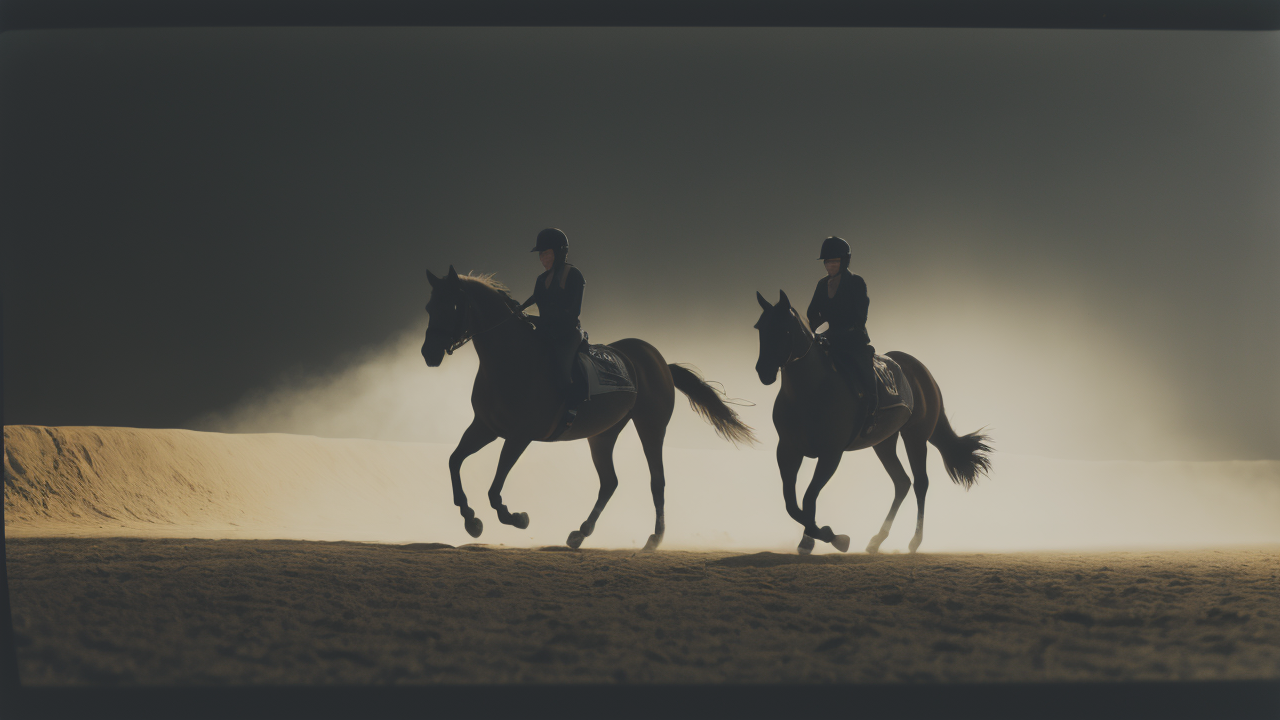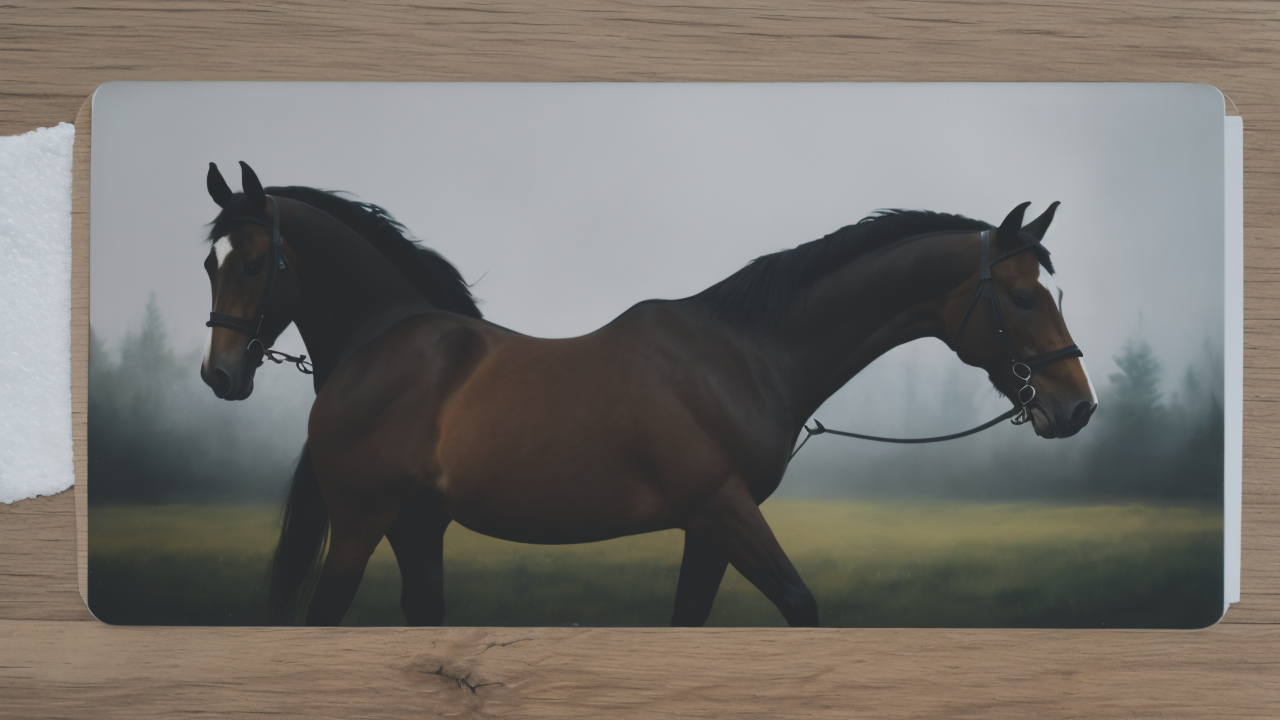
Equestrian-Inspired Holiday Decor: Unique Ideas for Horse Lovers
The Historical Significance of Oilpaintings in Equine Culture
The Rise of Oilpaintings in Equestrianism
Oilpaintings played a big role in horse art history. They became popular in the 1700s among rich people. Horse owners wanted to show off their best horses. Artists used oil paints to make beautiful horse pictures. These paintings looked very real and showed off the horses' beauty.

Oil paints were great for painting horses. They could show the shine on a horse's coat. Artists could paint small details like the horse's eyes. This made the horses in the paintings look alive. People hung these paintings in their homes to show they were wealthy.
The paintings also helped keep records of famous horses. They showed what top racing horses looked like. Some paintings showed horses with their owners or riders. These became important historical records.
Influential Oil Painters and Their Legacy
Some artists became very famous for their horse paintings. George Stubbs was one of the best known. He studied horse bodies to make his paintings look real. His work changed how people painted horses. He showed the right way to paint horse muscles and movement.
Another important artist was Sir Alfred Munnings. He liked to paint horses outside in nature. His paintings showed horses running or jumping. They looked full of energy. Rosa Bonheur was a woman painter who became famous. Her big painting called "The Horse Fair" is still famous today.
These artists taught others how to paint horses well. Their ideas are still used by artists today. They showed how to capture a horse's spirit in a painting. Many modern horse painters still look at their work for ideas.
Transitioning from Traditional to Modern Equine Art
Innovations in Oil Painting Techniques
As time went on, artists found new ways to paint horses. They tried different styles and methods. Some artists started to care more about showing light and movement. They wanted to show how horses looked at different times of day.

Modern artists use bright colors in their horse paintings. Some use thick paint to make the painting look 3D. This adds interest to the painting. Artists mix oil paints with other things to make new effects. They might add sand or glitter to the paint.
Artists also use new tools to paint. They might use knives instead of brushes. This can make the painting look rough and exciting. Some artists paint on wood or metal instead of canvas. All these new ideas have made horse paintings more interesting.
The Shift from Representational to Conceptual Art
In the 1900s, horse art started to change a lot. Artists began to paint horses in new ways. They didn't always try to make the horses look real. Instead, they used horses to show ideas or feelings. This was a big change from older horse paintings.
Some artists painted horses using only shapes and colors. You might not see a real horse, but you could feel what the artist meant. Other artists used horses to talk about big ideas. They might paint a horse to show freedom or strength.
This change let artists be more creative with horse art. They could paint a purple horse if they wanted to. It was more about the feeling than making a perfect horse picture. This opened up new ways to think about horses in art.
The Role of Oilpaintings in Contemporary Equestrian Artifacts
Integrating Traditional Techniques in Modern Design
Today, many artists use old painting methods to make new things. They might paint horses on cups or plates. Some artists paint tiny horses on Christmas tree balls. This brings old-style art to everyday items we use.

Designers often look at old horse paintings to get ideas. They might use colors they see in famous paintings. Some artists use computers to make art that looks like old paintings. This lets them make many copies of a design.
By mixing old and new ways, artists make special horse items. These things are popular with people who like art and horses. They add a touch of history to modern homes.
The Impact of Oilpaintings on Horse Ornament Industry
The horse ornament business has changed because of old painting styles. Many Christmas decorations now have small horse paintings on them. These little artworks make holiday trees look fancy.
People who collect horse things often want ornaments with detailed painting. This has led to more hand-painted horse decorations being made. Some artists make special ornaments that look like tiny oil paintings.
These ornaments let people own a small piece of horse art history. They are pretty to look at and also small works of art. People buying these items has helped keep old painting skills alive.
There are now many types of horse ornaments. Some look like old paintings, and others are more modern. This means there's something for everyone who likes horses. You can find fancy china horses or simple glass balls with horses on them.
The link between oil paintings and horse ornaments has created new jobs. Artists can now make money painting small, detailed horse scenes. People can collect sets of ornaments that show different painting styles.
Horse ornaments have become more than just decorations. They are a way to show love for horses and art. Some people buy them as gifts for horse-loving friends. Others collect them to remember special horses they've known.
Artists are always thinking of new ways to make horse ornaments. They might use sparkly paint or add real horse hair. Some make ornaments that look like famous paintings. This keeps the art form fresh and exciting.
In conclusion, horse art has come a long way from big oil paintings to small ornaments. It shows how art can change but still keep its history. People still love to see horses in art, no matter what form it takes.
As we look to the future, we can expect to see more new ideas in horse art. New tools might let artists make amazing horse decorations. But the old ways of painting horses will still be important. They remind us of the long history of horses in art.
Whether it's a big painting or a tiny ornament, horses still make us feel happy. The old oil paintings of horses still inspire new art today. This love for horse art will keep going for many years to come.


